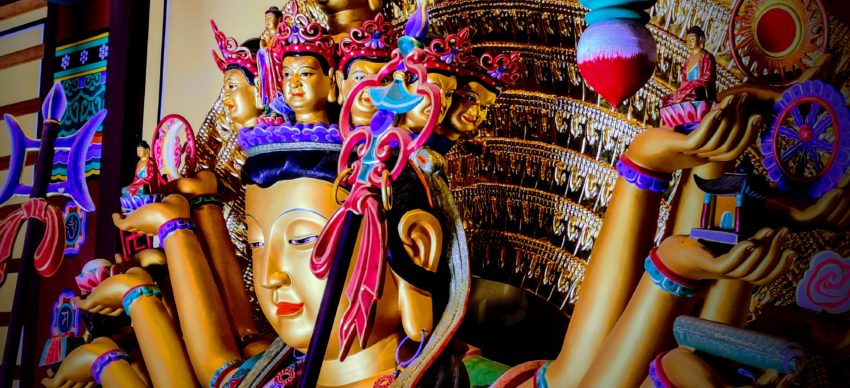It’s extremely easy to Google “temples near me” while living in South Korea and end up in a tranquil place within minutes–even without a car! But, with so many temples to choose from, you can quickly become inundated by the sheer amount that are available for visiting on the Korean peninsula.
That’s where this post aims to help–the Mangisa Buddhist Temple is a choice destination for some peace, solidarity, and epic photos, all while being within an easy 20-minute drive from Osan Air Base. Check out this amazing temple for a wonderful submersion into Buddhist tradition and heritage!
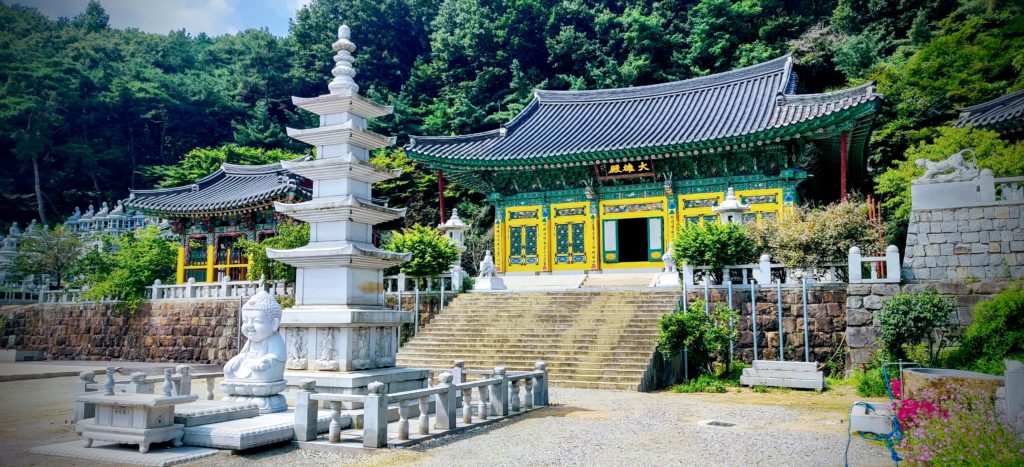
It’s hard to believe a place as peaceful as this exists so close to the hustle and bustle of Osan, Pyeongtaek, and Osan Air Base but, tucked away in the forests just on the outskirts of town, you can find relaxation personified. Only 20 minutes from Osan Air Base lies the Iron Seated Buddha in the hills of Jinwi-myeon, making it an easy half-day trip if you’re in need of decompressing and destressing.
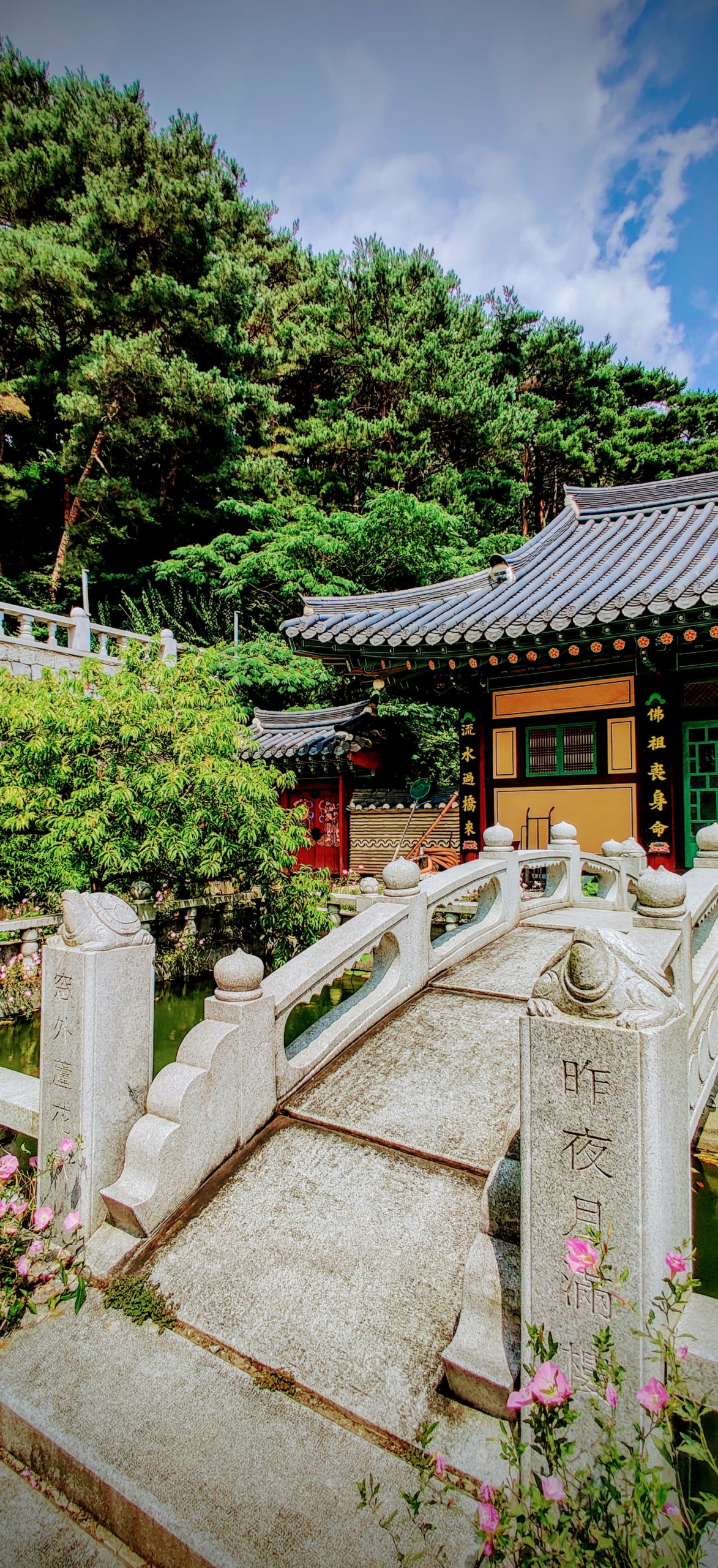
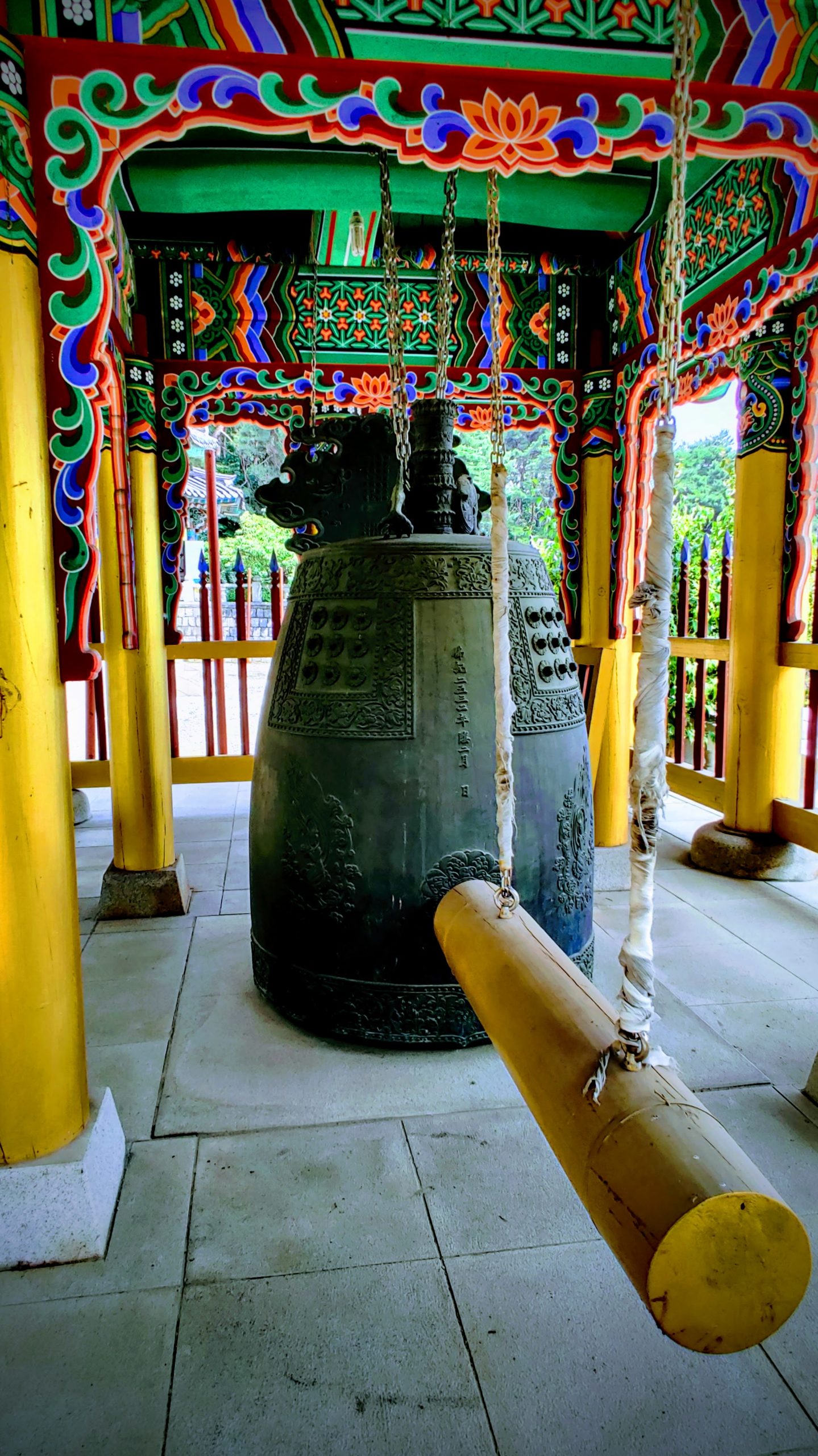
Though I visited this masterpiece in the summer, the Mangisa Temple grounds have been referred to as “chun-magok-chu-gapsa” which translates to a temple of spring and autumn given its impeccable color transformations during those seasons. I can only imagine the serenity of this place as the famous Korean fall colors provide amazing backdrops or the memorizing flower blooms explode with color throughout the grounds in the spring!
As you enter Mangisa, you must first pass through the Gate of the Four Heavenly Kings situated in the underworld of the Imperial Palace (inscribed in Chinese above the door). This is custom of Korean Temples and each will have a unique craftsmanship associated with the Kings; some large, some small, some colorful, some not. As you pass through, you’ll be welcomed by four, massive statues that stand on either side of the temple’s doors, carefully watching over the four cardinal directions of the world and the four seasons of the earth.
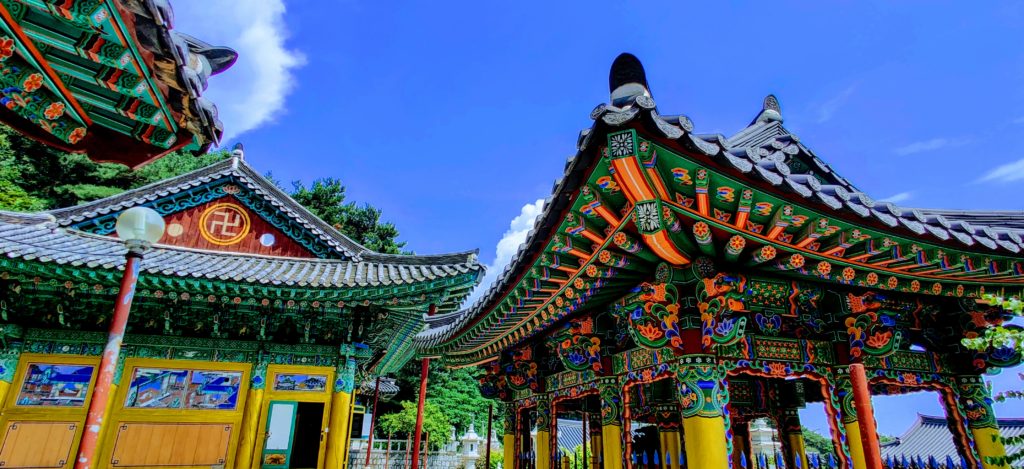
Of the four kings, one of them is playing a bipa (or lute), a popular instrument played by warriors in ancient central Asia, and another is firmly holding a sword parallel with the ground as if to almost have it aimed for you neck. That’s King Dhrtarastra and King Virudhaka respectively. King Vaisravana, the leader, is holding an umbrella to represent protection and King Virupaksa is holding a snake and a pearl to represent change and homogeneity.
What struck me the most about these Kings were the vibrant colors that donned their warrior ensembles, creating a very grandiose sight for the visitor. The size and postures of the Kinds are also something that caught my attention as I passed them. As I walked by, I couldn’t tell it I was soon to be protected by them, or if I was the one they were protecting the grounds from.
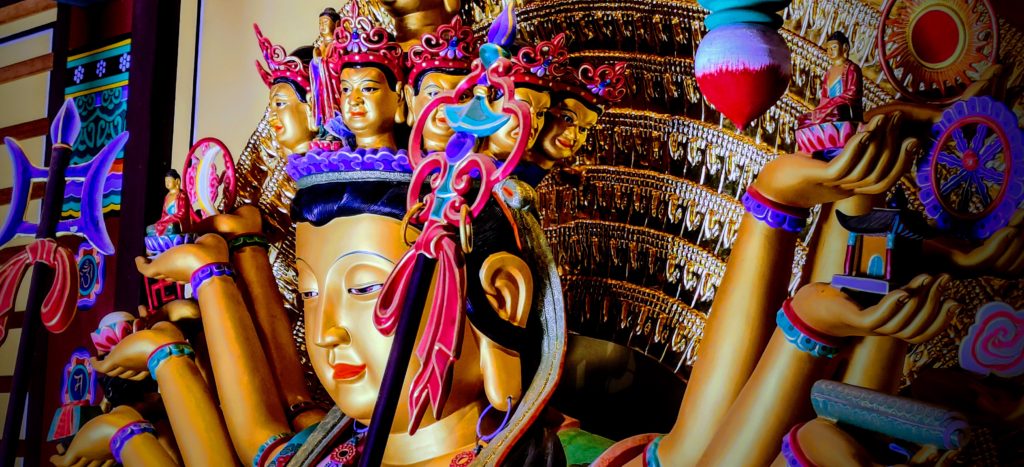
Once through the gate, you’ll climb up another set of stairs and find yourself in awe as your eyes are drawn immediately to the main hall situated atop the grounds. Pause here and listen to the dozens of bells ringing in the breeze as the warm winds remind you that you’re in a place of worship and peace. To your right is a small coy fish pond with a stone bridge that leads to one of the many halls on site. Watch carefully as you pass by; they will follow you!
As you enter the main hall, you’ll be eye-to-eye with the Iron Seated Nyorai dating all the way back to the Goryeo Dynasty (918-1392 AD). The left hand is palm up and the right facing the ground, symbolic of when Siddhartha Gautama attained enlightenment and became Shakyamuni. Notice the thick gold coverings of the Nyorai and the dragons circling just above his head.
It’s incredible to bear witness to such history while spending time in contemplation or relaxation here, definitely give it a shot some weekend!

